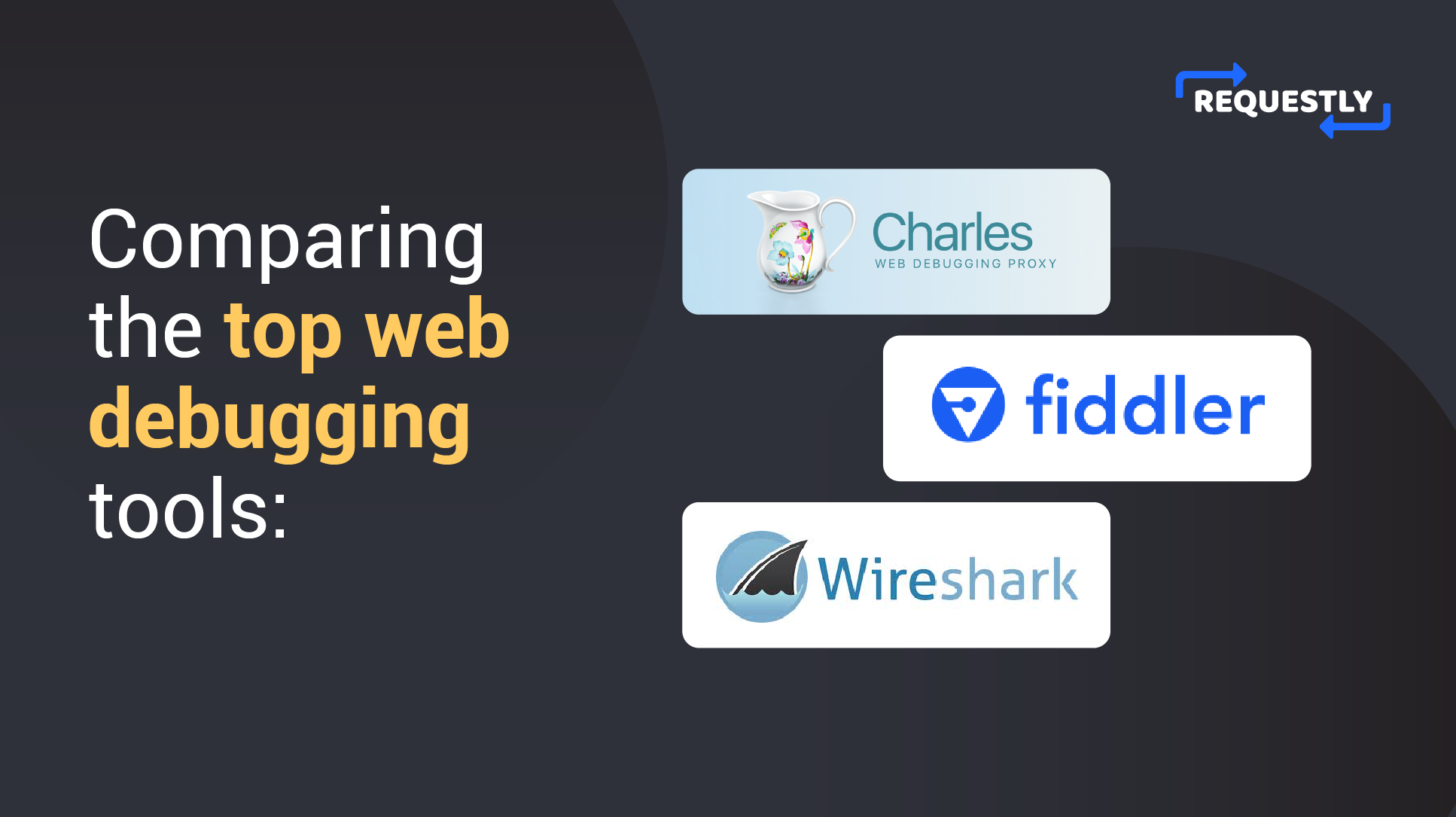Comparing Charles Proxy, Fiddler, and Wireshark
 Kaavian Sivam
Kaavian Sivam
Web debugging proxies are essential tools for developers to view HTTP and HTTPS traffic between their devices and the internet. These tools help developers debug web applications, verify HTTP requests and responses, and identify issues with network connectivity. There are several web debugging proxies available in the market, and in this article, we will compare five of the most popular ones: Wireshark, Charles Proxy, and Fiddler.
Wireshark
Wireshark is a widely used network protocol analyzer that lets you visualize what’s happening on your network at a granular level. It’s the go-to tool for network troubleshooting, analysis, and education worldwide. Wireshark offers features such as live capture, offline analysis, standard protocols decryption, rich VoIP analysis, and network filtering.
Charles Proxy
Charles Proxy is a cross-platform web debugging proxy that provides developers with a range of features such as SSL Proxying, Bandwidth Throttling, and Request/Response modification. It offers features like SSL Proxying, bandwidth throttling, AJAX debugging, and breakpoint tools for interruption and modification of traffic.
Fiddler
Fiddler is another popular web debugging proxy that runs on Windows. It provides developers with a range of features, such as HTTP/HTTPS traffic capturing, request modification, and performance testing. In addition to these features, Fiddler has a scripting engine called FiddlerScript, which allows for customizing the tool’s behavior. This scripting engine enables developers to create custom rules for modifying HTTP requests and responses. It also supports performance testing, making it a comprehensive solution for developers.
Comparison of web debugging tools
If you’re looking for a quick comparison of these tools, check out this comparison table. It provides a high-level comparison of features. Read further to learn more about the comparisons on topics such as Features, UI, and Pricing.
Features
On features wise, all these tools are rich with them.
Wireshark is renowned for its in-depth protocol analysis and live traffic capture. These features make it incredibly useful in understanding network behaviors, identifying bottlenecks, and troubleshooting network problems. However, it doesn’t provide request/response modification capabilities or user-agent switching, which are critical for web development and testing.
Charles Proxy’s standout features include SSL Proxying, bandwidth throttling, and AJAX debugging, which are quite useful when testing website performance under different network conditions. Additionally, its breakpoint tool allows developers to interrupt and modify traffic, providing a means to test different scenarios. However, it lacks features like user-agent switching and URL rewriting.
Fiddler is a robust tool that allows for extensive HTTP(S) traffic logging and web session manipulation. It offers URL rewriting and a breakpoint tool, much like Charles Proxy, which makes it useful for deeply inspecting and manipulating web traffic. However, it doesn’t provide user-agent switching or AJAX debugging, limiting its versatility in certain use cases.
UI
Although thousands of developers around the globe use Wireshark and Charles Proxy, they fail to occupy the top side in the design aspect. Wireshark’s interface is robust and detailed but can be intimidating for beginners. While Charles Proxy has a more approachable interface compared to Wireshark, it might seem cluttered to some users. Fiddler’s UI is information-rich and customizable, yet, it can be a bit overwhelming for beginners.
Pricing
With a $50/user plan, Charles Proxy is the most expensive among all other tools. Wireshark is an open-source tool, while Fiddler offers both free versions (with limited features) and paid versions.
How is Requestly different from these tools?
Requestly is an open-source web debugging proxy that is available as both a browser extension and a desktop app. It allows developers to intercept, modify, and mock HTTP/HTTPS requests and responses.
When it comes to the UI, Requestly takes the lead with its intuitive, sleek design, making it approachable for both beginners and experienced users.
In terms of features, Requestly offers a balance between depth and breadth, allowing users to perform complex tasks without compromising on the versatility of use cases.
In addition to the mentioned features, Requestly also provides advanced capabilities like script injection and creating mock servers to test various API responses and record user web sessions, which aren’t available in the other tools discussed.
On the pricing front, Requestly strikes a balance between affordability and functionality. It is an open-source tool, offering freemium to individual developers and affordable pricing plans for team collaboration. We have also clearly differentiated how Requestly differs from Wireshark and other web debugging tools like Proxyman, Modheader, and HTTP ToolKit separately.
Subscribe to my newsletter
Read articles from Kaavian Sivam directly inside your inbox. Subscribe to the newsletter, and don't miss out.
Written by
